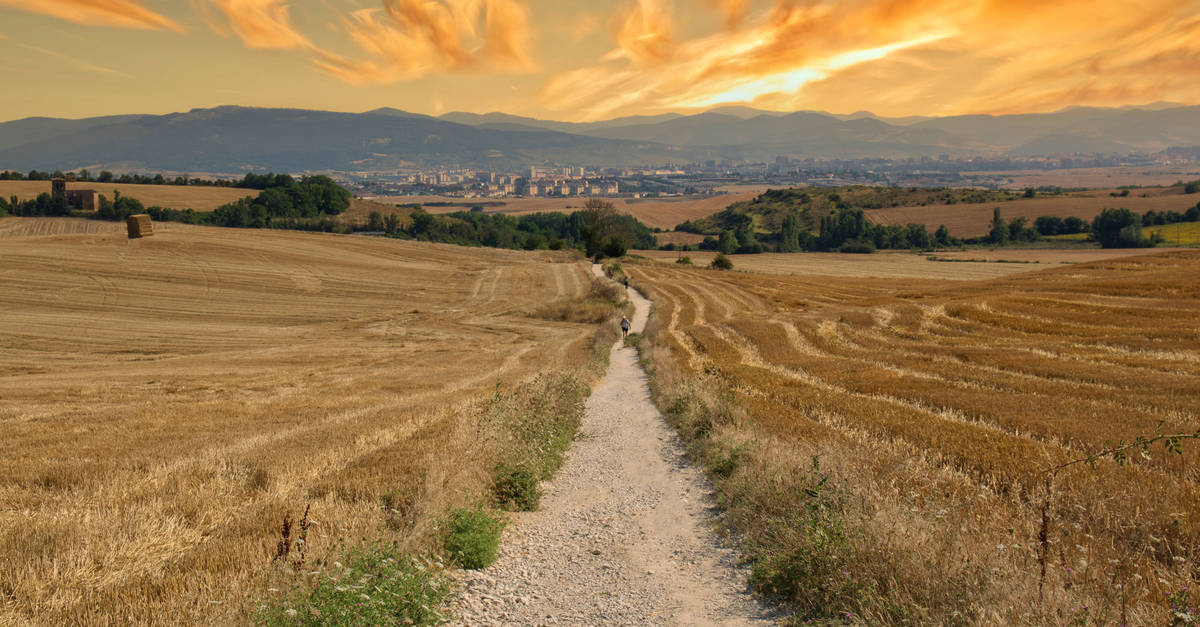The Camino de Santiago is a collection of European pilgrim routes that finish in Santiago de Compostela, Spain. Pilgrims walk between 7 and 30 days to receive their Compostela or certificate of completion.
The Camino de Santiago is busier in Holy Years. The next Holy Year is 2027. During a Holy Year, pilgrims are allowed a plenary indulgence, the absolution of all sins. During these years, the Holy Doors of Santiago Cathedral are opened to pilgrims.
Though many more walk el Camino de Santiago for other than religious reasons. Many say that the Camino is time to reset their life. It is an incredible experience and opportunity to disconnect and experience a slower daily life with few modern interruptions.
Camino de Santiago Routes
These are eight main Camino de Santiago routes in Spain that finish in Santiago de Compostela.
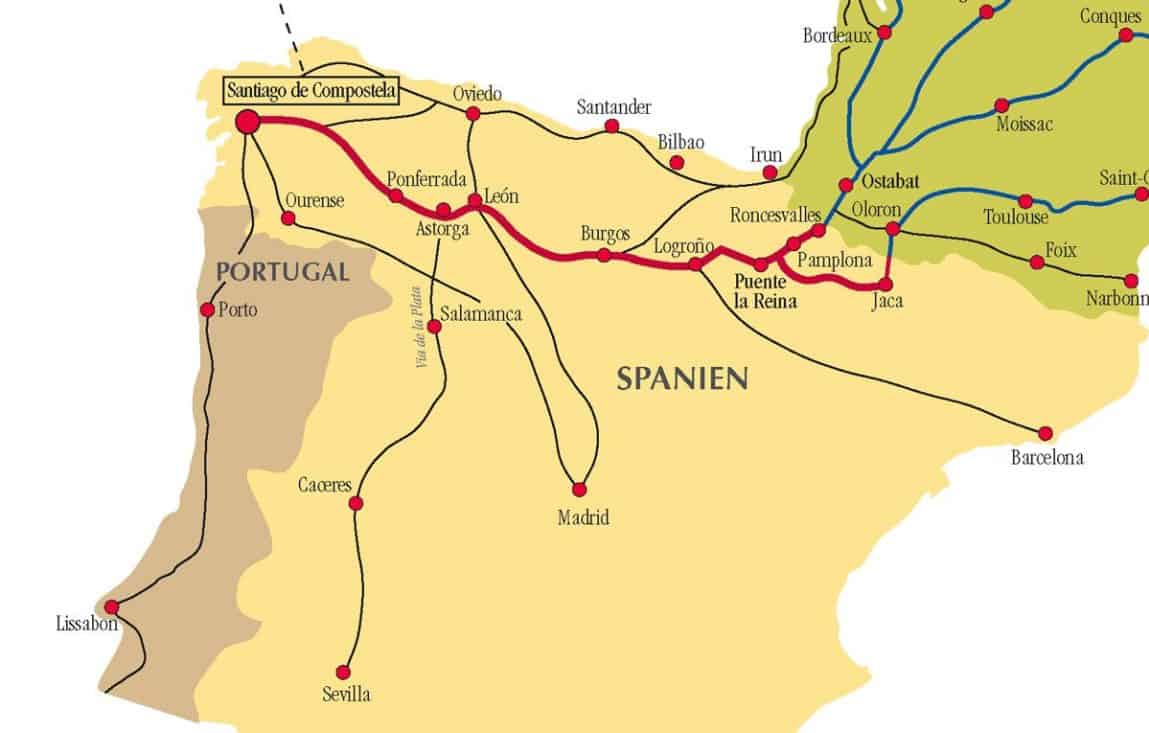
Camino Frances
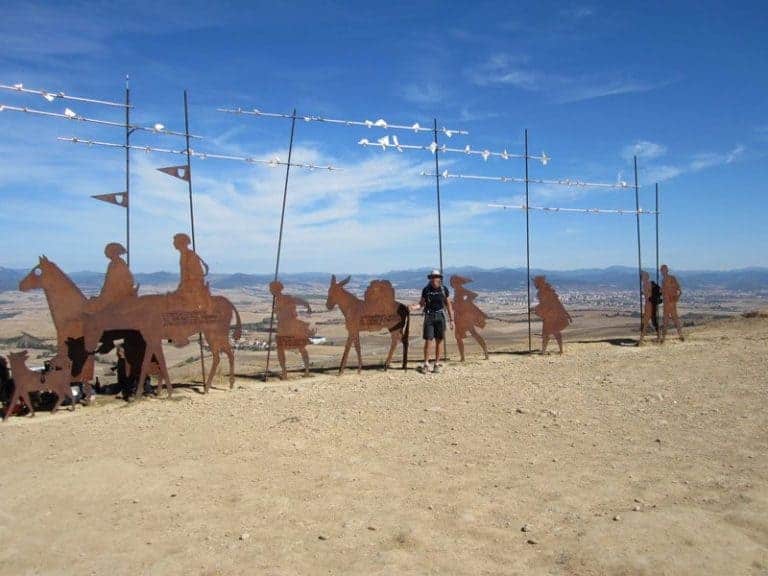
The Camino Frances is the most popular of all the Camino de Santiago Routes. The French route traditionally starts in St. Jean Pied de Port and runs for 780km west to Santiago de Compostela. It has the best infrastructure for pilgrims; I highly recommend this route for all first-time pilgrims. The Camino Frances is by far the busiest route, and often during the peak months of July and August, finding somewhere to sleep at night without booking ahead can be challenging.
If you are not Spanish, St Jean Pied de Port is the start, but Spaniards consider Roncesvalles the start. A much quieter alternative start is the Camino Aragones. Read more information on the Camino Frances here.
Via de la Plata/Silver Route
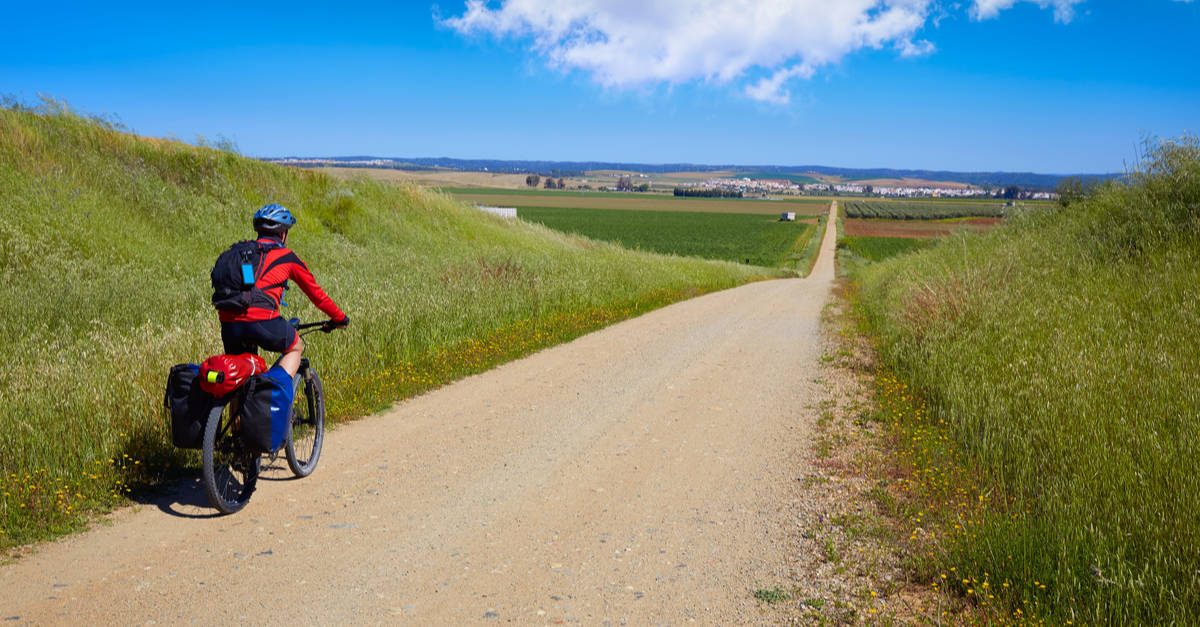
The Via de la Plata runs south to north. The route starts in Seville, although it is possible to start the route in Granada. The Silver Route is about 1000km and typically takes 6/7 weeks of walking. This route is becoming more popular as the support services like albergues improve and as the Camino Frances becomes increasingly busy.
The Via de la Plata follows an old Roman Road from Seville to Astorga, where the route joins the Camino Frances. There is an option after Montamarta to go west through Galicia towards Santiago de Compostela. Currently, there are few hostels on this route.
Camino del Norte
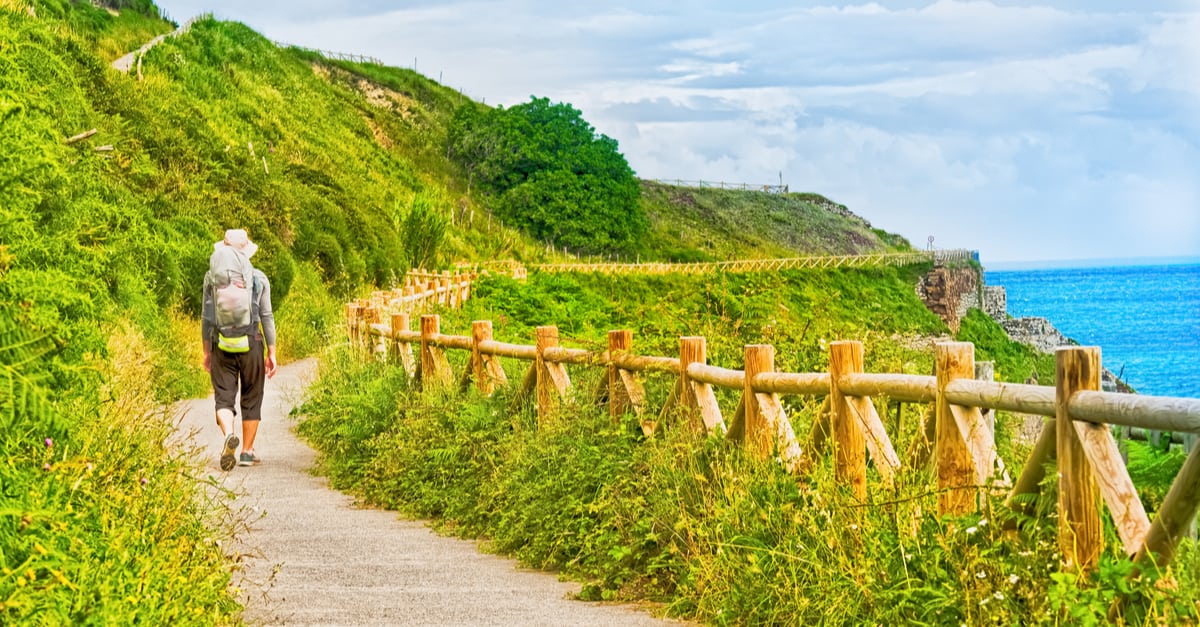
The Camino del Norte is also referred to as the Northern Route. It has the great advantage of traveling along the northern coast of Spain where there are opportunities to swim sometimes at the end of a day’s walking. The Camino del Norte is one of the most challenging of the Camino routes here due to the rough terrain and continuous climbs and descents along the coast.
The Northern Route is also considered more dangerous due to the unclear signposting and stretches along winding roads with little visibility. However, it is said the level of satisfaction increases with the level of difficulty. The Northern Route begins by crossing the Santiago Bridge into Irun, the start of the route has few pilgrims’ hostels. The route is about 825km.
Camino Portuguese
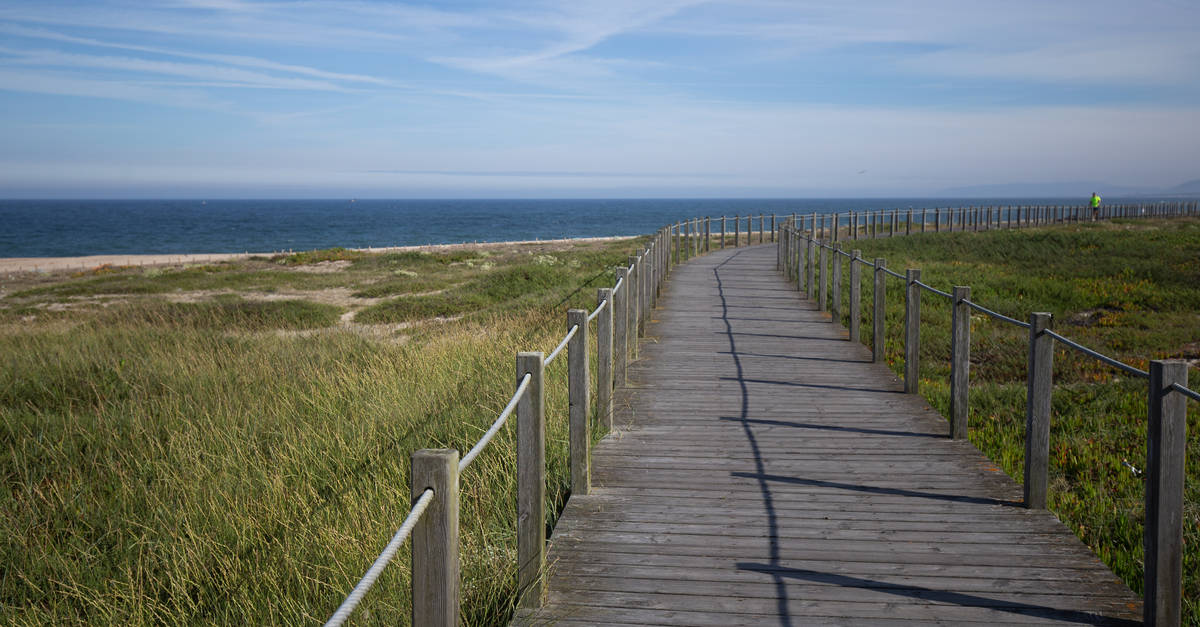
The main Camino Portuguese Route starts in Lisbon, but most pilgrims start walking in Porto, although there are many other Camino Routes in Portugal. From Porto, it is clearly waymarked all the way to Santiago. From Porto, this is one of the shorter Camino Routes at about 230km, and it is known as the Portuguese Coastal route. This route is well-signposted, and there are enough pilgrim hostels along the way.
The much quieter route is the Portuguese central route. A diversion can also be made to the pilgrimage site of Fatima.
Camino Ingles
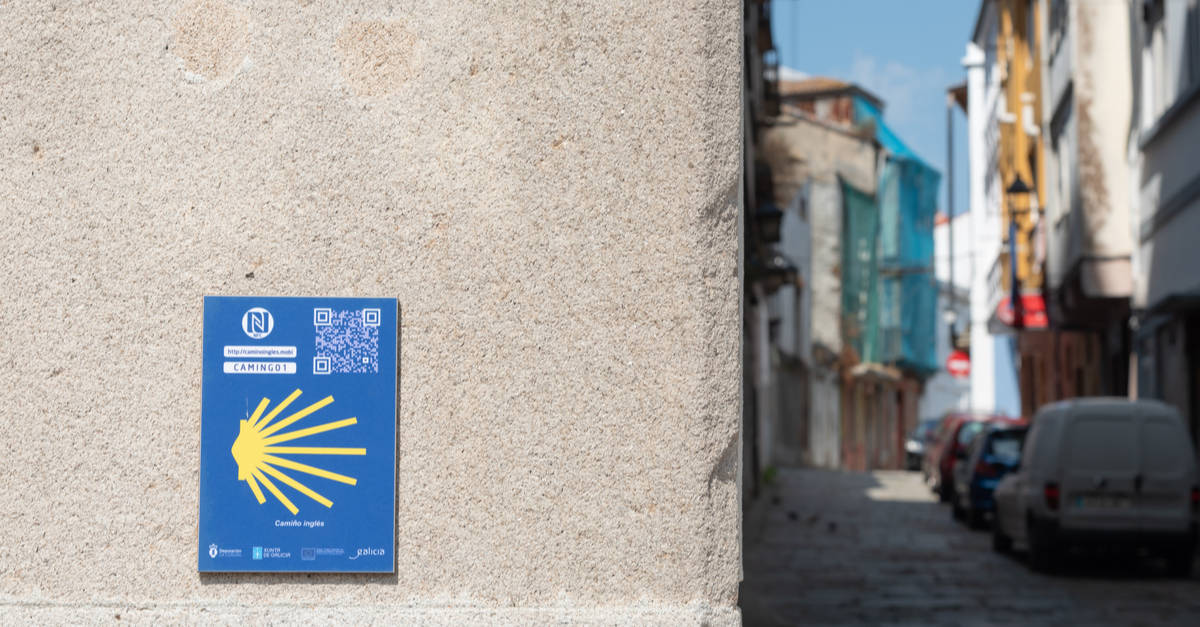
The Camino Ingles has two possible starting points; both are ports in Northern Spain: A Coruna and Ferrol. This would have been the traditional start for pilgrims from Ireland and the United Kingdom.
From Ferrol to Santiago, it is about 110km, and from A Coruna, only 75km. This is not enough to claim a Compostela in Santiago. Both of these routes meet near a village called Hospital de Bruma. There are few pilgrim hostels on this short route, and there has been much road building during the last few years. This is not a route to get away from it all. If you want to walk a short route, perhaps consider the Camino Portuguese or walk part of the Camino Frances, as you can start and stop anywhere you wish.
Camino de Madrid
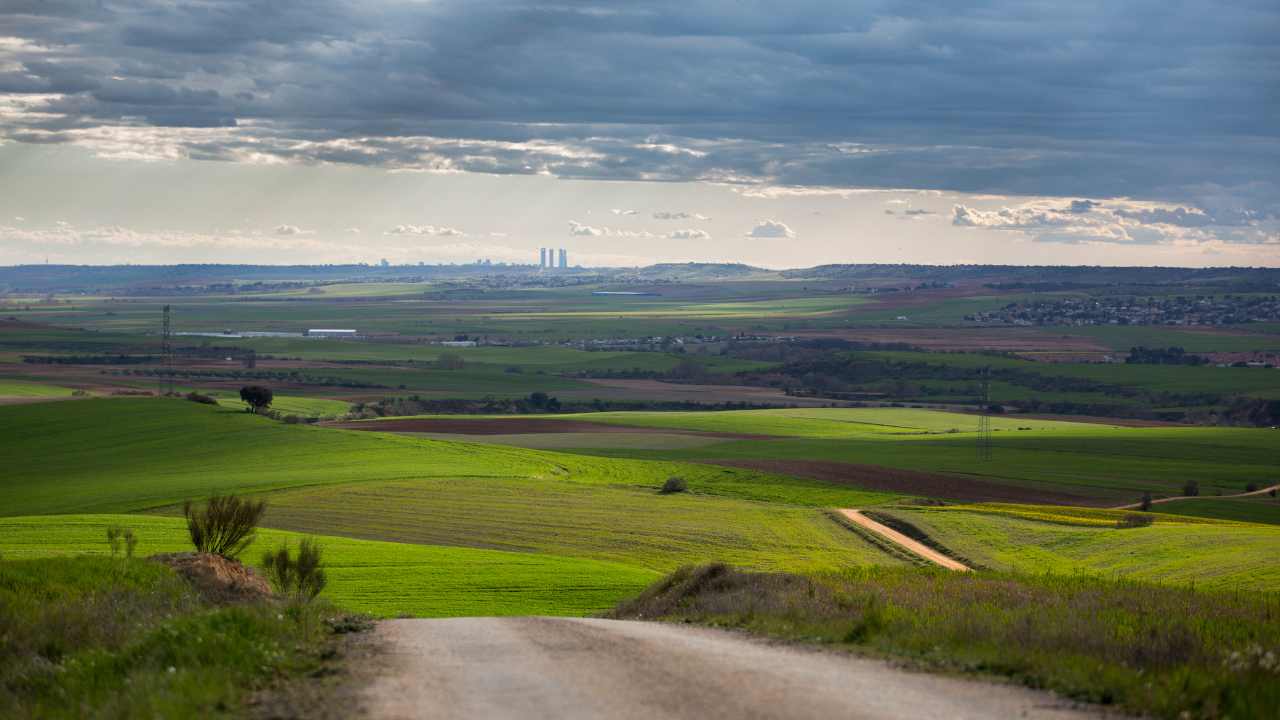
This is not for the faint of heart, as it can be extremely hot during the summer. The Camino de Madrid route starts in Madrid and joins the Camino Frances at Sahagun. It is 660 km to Santiago de Compostela, and the last 368 is walked on the French Way. If you want to get away from it all, this is one of the routes to choose.
FAQs About the Camino de Santiago
Below I have covered all the top questions about organizing, planning, and walking any of the routes. If you cannot find what you are looking for, use the search function above.
What is the Best Month to Walk the Camino?
The best times to walk the Camino are April, May, early June, September, and October. During July and August, the weather on Camino Frances is very hot. Also, it is very busy, if you can, it is better to choose another route.
How Long is the Camino de Santiago?
The main Camino route is 500 miles (800 Km). The route starts in Saint Jean Pied de Port and finishes in Santiago de Compostela. You do not have to walk the whole route, and you can start anywhere
How Long Does it take to walk the Camino de Santiago?
It usually takes 30 days to walk the entire Camino de Santiago. Some pilgrims walk faster, completing it in 24 days, and many walk slower and take up to 45 days.
How Many Miles a Day do you walk on the Camino?
The average that pilgrims walk is 16 miles per day. (26 Km) Some daily sections are longer than others, and every day can be split into fewer miles. Check the routes to create an itinerary.
How Many Hours a day do you walk on the Camino?
The average time that pilgrims walk each day is 6 – 7 hours, including breaks. The weight of your backpack, age, and fitness will all be major influences on your walking speed.
How Fit do You Need to be to Walk the Camino?
Your fitness will build as you walk the Camino de Santiago. You do not need a high level of fitness. Ensure you can walk 16 miles with your backpack before heading to Spain. I have created a training plan for the Camino and written in more detail on fitness levels. Thousand of pilgrims walk the Camino in their retirement, some again and again.
Is it Safe to Walk the Camino Alone?
Yes, it is safe to walk the Camino alone. Many thousands of pilgrims start alone on the Camino. However, you will quickly meet and walk with others in what is commonly referred to as a Camino Family. I, like many others, found love on the Camino and met my wife there in 2005.
How Much Water Should You Carry on the Camino?
You should carry a minimum of 1.5 liters of water at the start of each day. There are lots of fountains and cafes to refill your water bottle every 4 or 5 miles.
Where to get a Pilgrim’s Passport or Credential?
You need a pilgrim’s passport to stay in pilgrim-only accommodation. You can order a passport before you start from Confraternity websites or collect on at the most common starting places. You do not need a pilgrims’ passport to walk the route, but you do need one if you intend to stay in an accommodation designated for pilgrims.
You also need a pilgrim’s passport if you want a Compostela from the cathedral in Santiago. Please note you need to have walked more than 100 km or cycled more than 200 km to apply for the Compostela. So, if this is a Catholic pilgrimage and you want a plenary indulgence, ensure you get a pilgrim’s passport. I still have my pilgrims’ passports from each of my Caminos, they are part of my treasured memories.
What to Pack for the Camino de Santiago?
Your Camino packing list will depend on the time of the year you walk and should be less than 10% of your body weight. A summer sleeping bag or sleeping bag liner, hiking shoes or boots. A rain poncho or jacket will be needed all year, and consider trekking poles.
The following are the basics:
- Backpack
- Hiking shoes
- Sandals
- Hiking shorts
- Fleece jacket
- Microfiber towel
- Rain jacket or poncho
- First aid kit and blister treatments
- Sunscreen and toiletries
Whatever you pack, try to keep it as light as possible. The first year I walked the Way of St James, my backpack was 15 kg when I weighed in at the airport. The following year it was 6 kg which made it easier on the many steep ascents.
How Much Does the Camino de Santiago Cost?
You can walk the Camino for around $35 per day. However, a budget of $50 per day would be average if you stay in pilgrim hostels. If you stay in B&Bs (pensions), a budget of $100 is needed. It is easy to spend little on the Camino de Santiago and just as easy to spend a lot. The biggest costs are food and accommodation.
A budget of between $40 and $60 per day is reasonable. The first time I walked the French Way, my budget was around $35 per day – but that was in 2004. Overnight accommodation in an Albergue is between $10 and $15, it is around the same for an evening meal. Many albergues have kitchens where you can cook in the evening along with others. I have written more here on how much does the Camino de Santiago cost?
What is Accommodation Like on the Camino?
The first time I walked from Saint Jean Pied de Port to Santiago, I only stayed twice in pensions. I stayed in a youth hostel in Leon twice as they have private rooms and don’t have a curfew. I wanted to see the sights in Leon and have a late meal with friends I had met along the way. The rest of the time, I stayed in pilgrims’ hostels called albergues.
The pensions were basic and cheap, around €30 per night. They always had ensuite but no breakfast. I have met and talked with people who stayed in good hotels and Paradores. The accommodation depends on your budget and how much you want to socialize with other pilgrims.
Most albergues are basic. The private albergues are like good upmarket youth hostels. The ones owned by Confraternities vary widely. Some, like the hostel owned by the Confraternity of St James in Rabanal del Camino, are brilliant, others not so.
The albergues owned by the local regions or churches are usually very basic, but they have a great communal and welcoming feel. Except for the hostels owned by the Xunta in Galicia. These have a very high throughput of pilgrims and can be rough.
If You Only Have One/Two Weeks to Walk
Most people do not have a month or more to take off to walk the Camino Francés or longer for the Via de la Plata. I met many pilgrims who walked for one week on one of the Camino routes and came back the following year and started where they left off.
Two weeks on the Camino de Santiago is a decent amount of time to walk, giving you many choices. (Here are the best start points for one week on the main Camino routes).
Did I Lose Weight on the Camino?
This was certainly not one of my reasons for walking a pilgrimage on the Camino de Santiago, but I lost around 12 pounds the first time I walked.
What is the Age Group on the Camino?
The average age of pilgrims does tend to trend upwards. Let’s be serious; it is not a party and is less attractive to the younger generation. Most albergues have lights out around 10 pm, and many people are up and walking before 7 am. Most pilgrims are between the ages of 30 and 50. However, a considerable amount of people walk the Camino in their retirement.
Can You Cycle the Camino?
Many pilgrims cycle the Camino de Santiago. If you take or hire a mountain bike, you can travel the same paths as those walking most of the Camino routes. Some parts get a little rocky, and a few steep descents will need to be walked, but overall it is something that many do, and I would love to cycle the Camino my next time.
Cycling is accessible on the Camino Frances and the Via de la Plata but more difficult on the Camino Primitivo, the Camino del Norte, and the Camino Ingles. The Le Puy route in France is almost impossible to cycle. However, these more difficult routes often have parallel cycling routes.
Do I Need a Guidebook?
I took a guidebook with me each time. You do not need a guidebook or map for the route, as it is almost impossible to get lost due to the great waymarking. But Camino Guide Books are helpful for the history, local sites, and places to stay.
My Experience of the Camino de Santiago
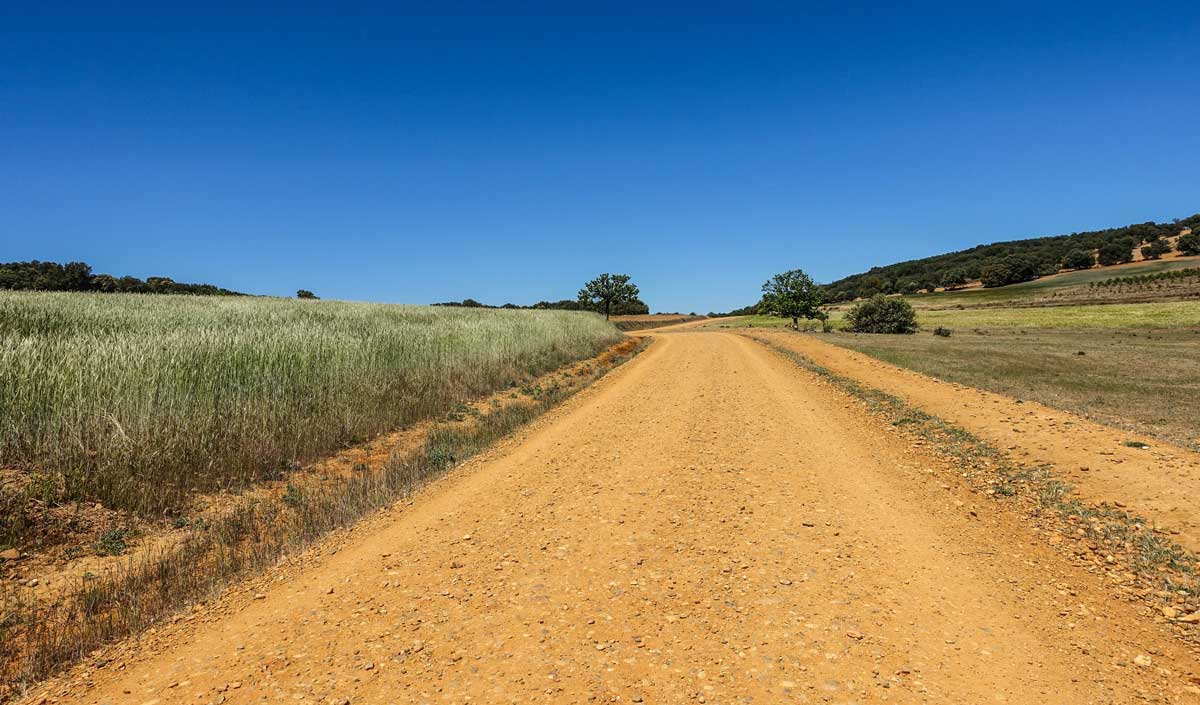
I first heard about the Camino de Santiago in 2003 from a friend. The more he talked about it, the more my interest grew. In 2004 I walked the most popular Camino de Santiago route called the Camino Frances. At that time, I didn’t even know there was more than one Camino de Santiago route or that it is also referred to as the Way of St James.
Over 30 days, I walked up the Pyrenees from Saint Jean Pied de Port in southern France. Then into Spain and downhill into Roncesvalles, where pilgrims have stayed since the Middle Ages. Then onward to Pamplona, famous for the running of the bulls, a city with some of the best tapas I have ever eaten. Always heading west to Santiago de Compostela.
My Camino pilgrimage continued to Puente la Reina, where there is the Irache wine fountain is nearby for pilgrims. Then on through Logrono and stopping briefly in Burgos to admire the stunning cathedral while saying hello to El Cid as I walked by.
Leaving Burgos, we climbed up onto the Meseta, a beautiful barren landscape with the Picos de Europa mountains always away in the distance to the west and then the north. I stayed overnight in Leon, one of my favorite cities. Then, I wandered through the smaller cities of Astorga and Ponferrada with their tales of the Knights Templar. Eventually, after enjoying the eucalyptus forest along the last stretch, I walked into Santiago de Compostela, the end of one journey, and started another.
In the process, I became a fan of the Camino de Santiago, pilgrimages, and very long-distance hikes. This website is the result of that first pilgrimage. I consider myself very fortunate to have walked three different Camino routes in Spain and France (twice on the French Camino, once on the Aragonese Way, the only time we got lost, and my last was on the Le Puy route in France).
All of the Camino de Santiago pilgrimage routes lead to Santiago de Compostela in northwest Spain. The Camino de Santiago routes were first walked only as a pilgrimage to the remains of St James. His remains are in the Cathedral in Santiago de Compostela. Today modern pilgrims walk for many different reasons.
When I first walked the Camino de Santiago, there was very little information online and only a few guidebooks. This allowed for a freedom of mind that is perhaps no longer experienced. I packed too many things in my backpack, believing that I would be in remote areas for the next 4 weeks; now I chuckle at how little I knew.
I just walked each day and did not book accommodation ahead. I mainly stayed in pilgrim hostels called albergues, and I walked in tandem with many who started at the same time and made friends that I still keep in contact with today. More importantly, I met my wife.
For modern pilgrims, the overwhelming information online today can result in overplanning. There is no right or wrong way to get to Santiago de Compostela, and you can start anywhere that suits you.
It is your Camino – do it in whatever way you want.
The Final Destination
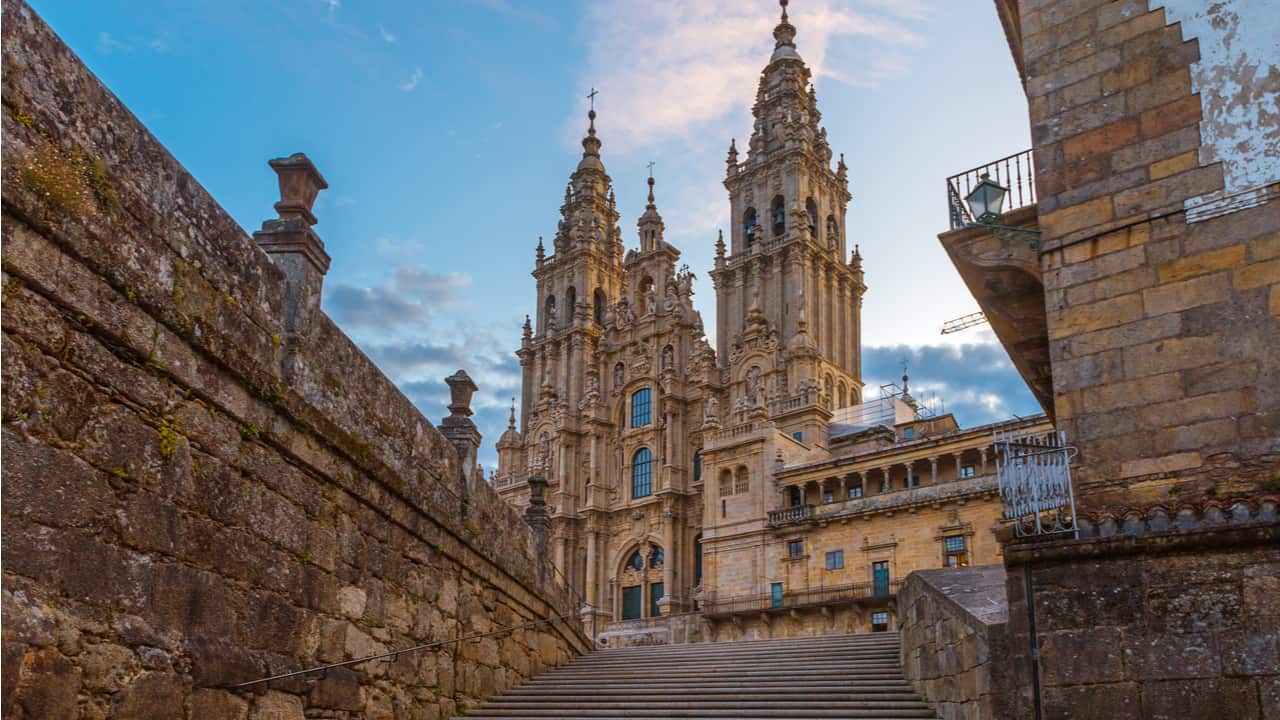
Santiago is the destination for all the Camino de Santiago routes. It is a beautiful old city; everyone must visit the Cathedral. Here are the best posts about the city.
The Camino de Santiago is for everyone: young, old, fit, unfit, religious, or otherwise. One of the surprising observations I had was that people I thought would drop didn’t – and most of the people I saw with problems were younger people – perhaps trying to push their walking too fast.
One significant bit of advice I got was – to slow down – a Frenchman I met kept telling me this – I listened after a while and traveled as far but with much less pain and strain.
Get used to the sound – Buen Camino – it can be a beautiful journey.
In 1985 2,491 pilgrims completed the Camino de Santiago. In 1995 there were 19,821, then in 2005, there were 93,921. In 2016, there were 277,854 recorded pilgrims who completed their Camino to Santiago de Compostela. There were an estimated 430,000 in 2022.
These are only the pilgrims that asked for and received a Compostela, therefore, many more completed the routes. Figures compliments of the Office de Acogida al Peregrino in Santiago de Compostela.

